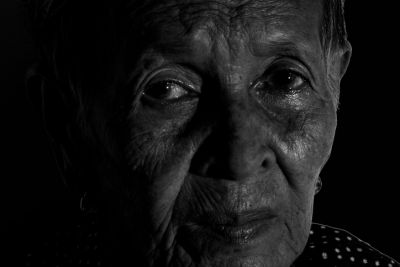 Death is not an easy concept to grasp. Even though people have been aware of their own mortalities for a very large chunk of human history, there is still something very unsettling about pondering what lies beyond life. Often, it is useful to take a look at ways other cultures deal with death in order to gain a new perspective. By examining the way other people across the planet cope with loss and mourn for their dead, you might be able to glean some insight into your own grief.
Death is not an easy concept to grasp. Even though people have been aware of their own mortalities for a very large chunk of human history, there is still something very unsettling about pondering what lies beyond life. Often, it is useful to take a look at ways other cultures deal with death in order to gain a new perspective. By examining the way other people across the planet cope with loss and mourn for their dead, you might be able to glean some insight into your own grief.
Famadihana
In a vast majority of Western cultures, the act of burying the body of the deceased is quite commonplace. Although other methods like cremation have become popularized, laying a body to rest in the ground is still the largest practice. Usually, the deceased is placed in a plot of land with a gravestone or other signifying marker on the ground above. It might seem taboo or outright wrong to dig the body back up after it has been placed in the ground but that is exactly what the Malagasy people of Madagascar do.
Famadihana is a funerary tradition in Madagascar that dates back several centuries. The tradition translates to “turning of the bones” and it is easy to see where this practice got the name. In this tradition, friends and relatives of the deceased will dig up their bodies and rewrap them in fresh burial cloths. The idea here is that the spirit of the deceased will not pass to the next life until the body is completely decomposed. Digging up the corpse and celebrating the lives of the departed is a way to help the soul along the journey.
Posing the Dead
In the Philippines, there are several funerary practices that are quite different than the ones practiced in other nations. One Tinguian tradition has the deceased propped upright in his or her finest clothes. The idea here is to give the departed the feeling of still being alive. Often, lit cigarettes will be placed in the mouths of the deceased to imitate a lively action. The bodies will often sit in this position for many weeks before the families bury the bodies and move to the next stages of mourning and celebration.
There is also another interesting practice in the Philippines carried out by the Sagada people that takes the bodies of the deceased to new heights in a very literal way. The Sagada believe that the departed must be laid to rest as close to the sky as possible. In order for the soul to ascend, it needs to be high enough to break free into the beyond. Due to this, the Sagada place their dead in coffins and tie the coffins to the sides of high cliffs so that their loved ones will have a shot at peace.
Air Sacrifice
Buddhists in Mongolia also developed an interesting funerary practice when there was not enough wood in Tibet to continue traditional cremation procedures. The Buddhists of this area believe the body belongs to nature and so will leave the bodies of the newly deceased outside on the ground and outline them with rocks. Hungry dogs and vultures will then come to pick the bones of the body clean. In the end, all that is left behind is the outline of the departed, with all of the body’s earthly remains returning to the circle of life.
Grief takes many forms. Though it can be difficult to try and imagine what waits beyond, it can be comforting to examine how other human beings approach the topic of death. By learning more, you will be able to find your own way to make peace with it all.
Add Your Comment